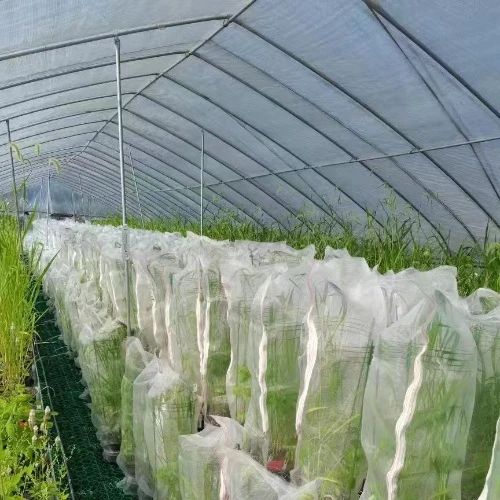-
 Afrikaans
Afrikaans -
 Albanian
Albanian -
 Amharic
Amharic -
 Arabic
Arabic -
 Armenian
Armenian -
 Azerbaijani
Azerbaijani -
 Basque
Basque -
 Belarusian
Belarusian -
 Bengali
Bengali -
 Bosnian
Bosnian -
 Bulgarian
Bulgarian -
 Catalan
Catalan -
 Cebuano
Cebuano -
 China
China -
 Corsican
Corsican -
 Croatian
Croatian -
 Czech
Czech -
 Danish
Danish -
 Dutch
Dutch -
 English
English -
 Esperanto
Esperanto -
 Estonian
Estonian -
 Finnish
Finnish -
 French
French -
 Frisian
Frisian -
 Galician
Galician -
 Georgian
Georgian -
 German
German -
 Greek
Greek -
 Gujarati
Gujarati -
 Haitian Creole
Haitian Creole -
 hausa
hausa -
 hawaiian
hawaiian -
 Hebrew
Hebrew -
 Hindi
Hindi -
 Miao
Miao -
 Hungarian
Hungarian -
 Icelandic
Icelandic -
 igbo
igbo -
 Indonesian
Indonesian -
 irish
irish -
 Italian
Italian -
 Japanese
Japanese -
 Javanese
Javanese -
 Kannada
Kannada -
 kazakh
kazakh -
 Khmer
Khmer -
 Rwandese
Rwandese -
 Korean
Korean -
 Kurdish
Kurdish -
 Kyrgyz
Kyrgyz -
 Lao
Lao -
 Latin
Latin -
 Latvian
Latvian -
 Lithuanian
Lithuanian -
 Luxembourgish
Luxembourgish -
 Macedonian
Macedonian -
 Malgashi
Malgashi -
 Malay
Malay -
 Malayalam
Malayalam -
 Maltese
Maltese -
 Maori
Maori -
 Marathi
Marathi -
 Mongolian
Mongolian -
 Myanmar
Myanmar -
 Nepali
Nepali -
 Norwegian
Norwegian -
 Norwegian
Norwegian -
 Occitan
Occitan -
 Pashto
Pashto -
 Persian
Persian -
 Polish
Polish -
 Portuguese
Portuguese -
 Punjabi
Punjabi -
 Romanian
Romanian -
 Russian
Russian -
 Samoan
Samoan -
 Scottish Gaelic
Scottish Gaelic -
 Serbian
Serbian -
 Sesotho
Sesotho -
 Shona
Shona -
 Sindhi
Sindhi -
 Sinhala
Sinhala -
 Slovak
Slovak -
 Slovenian
Slovenian -
 Somali
Somali -
 Spanish
Spanish -
 Sundanese
Sundanese -
 Swahili
Swahili -
 Swedish
Swedish -
 Tagalog
Tagalog -
 Tajik
Tajik -
 Tamil
Tamil -
 Tatar
Tatar -
 Telugu
Telugu -
 Thai
Thai -
 Turkish
Turkish -
 Turkmen
Turkmen -
 Ukrainian
Ukrainian -
 Urdu
Urdu -
 Uighur
Uighur -
 Uzbek
Uzbek -
 Vietnamese
Vietnamese -
 Welsh
Welsh -
 Bantu
Bantu -
 Yiddish
Yiddish -
 Yoruba
Yoruba -
 Zulu
Zulu
plastic mesh net
Understanding Plastic Mesh Nets Versatility and Applications
Plastic mesh nets are an incredibly versatile product that has found applications across multiple industries due to their lightweight, durable, and cost-effective nature. Made from various types of plastics such as polyethylene, polypropylene, and nylon, these nets are engineered for a range of uses, making them an essential component in agriculture, construction, aquaculture, and many other fields.
One of the primary uses of plastic mesh nets is in the agricultural sector. Farmers utilize these nets to protect crops from birds and other pests, reducing losses and improving yield. The mesh allows sunlight and rain to reach the plants while acting as a barrier, thus creating a controlled environment for the growth of fruits and vegetables. Furthermore, during the early stages of plant growth, these nets can serve to support young plants against wind and other elements, ensuring healthier development.
In the construction industry, plastic mesh nets are utilized for safety and structural purposes. Safety nets made from plastic mesh are often placed around scaffolding and high-rise buildings to prevent workers and materials from falling. They provide a lightweight yet sturdy safety measure that adheres to construction regulations. Moreover, these nets are sometimes used for controlling debris, ensuring that construction sites remain safe and organized.
Aquaculture is another field that benefits significantly from plastic mesh nets
. In fish farming, these nets help in the cultivation of fish in a controlled environment, providing the right conditions for growth while allowing for easy feeding and harvesting. They are designed to resist corrosion and degradation from saltwater, ensuring longevity and reliability in aquatic settings. These nets can also be employed in shellfish farming, where they help to keep mature shells separated from younger ones, preventing overcrowding and disease.plastic mesh net

In addition to these primary applications, plastic mesh nets are commonly used in landscaping and horticulture. Gardeners use them for trellising climbing plants, providing support while allowing air and sunlight to penetrate. Additionally, they can be employed in landscaping to create decorative elements, such as garden borders or separation between different areas. The aesthetic versatility of plastic mesh nets allows for both functional and decorative uses in gardens and public spaces.
The environmental impact of plastic mesh nets is also an essential consideration. Manufacturers are increasingly focusing on creating nets that are recyclable and made from sustainable materials. Such practices help reduce plastic waste and encourage a circular economy. As the awareness of environmental issues grows, the demand for eco-friendly alternatives continues to rise, prompting innovation in the production of plastic mesh products.
Moreover, the ease of installation and flexibility of plastic mesh nets make them a preferred choice for DIY projects at home or in community initiatives. Whether it’s building a garden fence, creating pet enclosures, or implementing erosion control measures, the adaptability of plastic mesh nets makes them an invaluable resource.
In conclusion, plastic mesh nets are a practical and multifaceted solution widely used across various sectors. Their functionality, combined with the potential for eco-friendly manufacturing, positions them as a critical product in today’s market. As industries continue to innovate and the environment becomes a focal point for development, the relevance of plastic mesh nets is only expected to grow, affirming their role as essential tools in modern applications.
-
Shipping Plastic Bags for Every NeedNewsJul.24,2025
-
Safety Netting: Your Shield in ConstructionNewsJul.24,2025
-
Plastic Mesh Netting for Everyday UseNewsJul.24,2025
-
Nylon Netting for Every UseNewsJul.24,2025
-
Mesh Breeder Box for Fish TanksNewsJul.24,2025
-
Expanded Steel Mesh Offers Durable VersatilityNewsJul.24,2025











